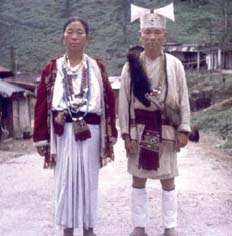/topics/society-culture-religion-and-history
Society, Culture, Religion and History
Sunderbans - A climate adaptation report by World Wildlife Fund India
Posted on 09 May, 2011 09:23 PM Beginning in 2005, WWF-India has conducted dozens of personal interviews to record how climate change impacts people's lives here and now. These perceptions demanded that s
Beginning in 2005, WWF-India has conducted dozens of personal interviews to record how climate change impacts people's lives here and now. These perceptions demanded that s
Call for entries on Jeevika Asia Documentary Festival 2011 - Centre for Civil Society – Apply by 4th July, 2011
Posted on 09 May, 2011 05:05 PMTaking place in the heartland of India, New Delhi, the 8th JEEVIKA: Asia Livelihood Documentary Festival is a non-profit film showcase promoting films that put livelihood on the live wire! Organised by the Centre for Civil Society, the documentary festival is a part of the larger Livelihood Freedom Campaign ‘JEEVIKA’ which helps develop public policy measures to clear the path for free enterprise.
Water conservation and Islam ? A blog post by Ausaf Malik
Posted on 27 Apr, 2011 02:29 PMMany of the ancient old age stories describes also in these holy text, but only two religion have more sensitive about to water conservation concept in their religious thoughts, as well as in the traditions also.
"In Search of Yamuna: Reflections on a River Lost" - A recent book as an ode to rivers
Posted on 27 Apr, 2011 02:26 PMAbout the book
 In the present mood of transience and conflict, amidst the emerging riverfront politics, these communities seem to be caught in the eye of the storm.
In the present mood of transience and conflict, amidst the emerging riverfront politics, these communities seem to be caught in the eye of the storm.
Census: India, a nation of 1.21 billion - Article from Down to Earth
Posted on 25 Apr, 2011 05:30 PM
 India is the most populous nation after China (1,342 million). India hosts 17.5 per cent of the world’s population compared to China’s 19.4 per cent. Of 28 states and seven Union Territories, 20 states contribute to 98 per cent of India’s population.
India is the most populous nation after China (1,342 million). India hosts 17.5 per cent of the world’s population compared to China’s 19.4 per cent. Of 28 states and seven Union Territories, 20 states contribute to 98 per cent of India’s population.
Role of indigenous knowledge system in conservation of forest resources – A case study of the Aka tribes of Arunachal Pradesh – A paper in the Indian Journal of Traditional Knowledge
Posted on 23 Apr, 2011 09:01 PM Indigenous knowledge is the basis for local level decision making in agriculture, healthcare, food preparation, education, natural resource management, and a host of other activities in rural communities.
Indigenous knowledge is the basis for local level decision making in agriculture, healthcare, food preparation, education, natural resource management, and a host of other activities in rural communities.
History of irrigation in Bihar – Ancient, British and upto Pre-plan Period – A report by the Water and Land Management Institute, Patna
Posted on 23 Apr, 2011 10:29 AMIrrigation is being practiced there since ancient times dating back to Kautilya, who lived in Patliputra (now Patna), which was the capital of the mighty Mauryan empire (400 BC). Kautilya had laid down the principles on rainfall and irrigation in his famous book Kautilya Arthasashtra.
Traditional knowledge used in paddy cultivation in Raipur district of Chhattisgarh – A paper in the Indian Journal of Traditional Knowledge
Posted on 22 Apr, 2011 07:42 PMRice is the main crop cultivated in the State and several indigenous technologies are being used by farmers for seed germination, preventing the crop from insect/pest attack in the field as well as for storage.
Between the city and the salty sea - The wells of Bhuigaon, Thane, Greater Mumbai - Guest post by MS Gopal
Posted on 22 Apr, 2011 05:57 PMAs the concrete jungle of Greater Mumbai reaches Bhuigaon and overuse of groundwater sucks in the sea water, the traditional wells are under threat.






